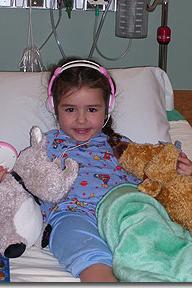Everyone in the family, including young children, will sense and be affected by the hospitalization of a family member.
What children need during times of stress
- Contact with a parent or other close caregiver
- Simple, age-appropriate and honest explanations
- Reassurance and physical comfort
- Consistency in routine and limits
- Bedtime
- Naptime
- Attending school or daycare
- Regular mealtimes and food choices
- Maintain rules and expectations of behavior
- Special time set up just for them
- Read a book together
- Complete a project
- Do an art activity
- Go for a walk
- Have a meal together
- Time to talk about or play about their experiences
- Inclusion in the family to help in feeling like they are a part of the process
- Regular updates using words they are able to understand
- Planned and unplanned time to talk about questions or worries
- Phone calls, Face Time, Skype, or other time planned for the family to connect
What you can do
Children's development plays a part in how they understand and process events and information. Even if a child is not able to understand the language being shared, the child will likely sense the stress and changes the family is experiencing.
- Together, talk openly about the feelings and emotions you are experiencing.
- Connect each day to make a plan for the schedule of the day that will include daily routine (examples: transportation to scheduled events, meals, etc).
Some families wonder if it will be helpful for a sibling to visit in the Intensive Care Unit (ICU). For help answering this question, download Children Visiting the Intensive Care Unit (PDF), a guide to help support caregivers of children visiting the ICU setting.
Resources for siblings
While it is often helpful for children to visit their hospitalized sibling, it may not always be possible.
Below are resource booklets full of activities to help children feel connected with their hospitalized sibling:
Some additional ideas to help a child stay connected:
- Rotate journals: Find blank journals for each child to write messages and exchange between visits.
- Draw pictures, create a card, or print out photographs: Encourage the sibling to draw pictures, write a message, or choose photographs to be posted in the patient room..
- Use recordable books: Recordable books allow siblings (or other family members) to read a story to the hospitalized child, even if they cannot be with them. Amazon.com offers several recordable books.
- Make video messages: Record video messages on your phone.
- Use FaceTime or Skype: Take the idea of the video message one step further and chat in real time with each other. If you don't have access to this feature with a mobile device, Skype may be an alternative.
